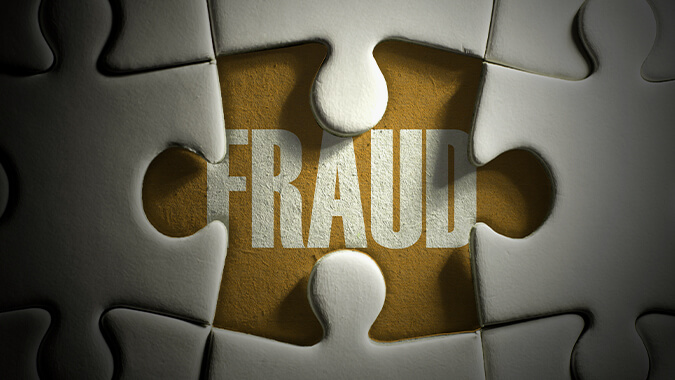
Business Interruption Claims in the Aftermath of a Hurricane, Tropical Storm and Other Natural Disasters
- Published
- Sep 2, 2021
- Share
The EisnerAmper team hopes that you and your loved ones are safe and doing well in the aftermath of Hurricane/Tropical Storm Ida.
Here at EisnerAmper, we understand that small businesses are the backbone of the U.S. economy. In the ongoing impact of the COVID-19 pandemic and now Hurricane Ida, and with more storms on the horizon, many businesses are dealing with the aftermath of physical clean-up as well as interruptions of their business operations.
Hurricanes, earthquakes, and other natural disasters wreak havoc long after the storm departs. The damage to a region can be catastrophic and costly. As clean-up and recovery efforts ensue, business owners must understand their applicable insurance coverage and begin the process of filing claims.
A property insurance policy covers the physical damage to the business. A business income insurance (BI) policy covers the loss of income that would have been earned while its facility is either closed because of a disaster or during the resulting recovery and rebuilding processes. BI coverage is typically added onto the business’s property/liability insurance policy or comprehensive policy.
Here Are Some Tips To Help You Prepare for Your Claims/Proof of Loss Process:
- Notify your carrier ASAP.
- Maintain a file and timeline for all communications with your insurance carrier
- Document your claim for physical damage as well as business interruption – work with your insurance adjuster but be pro-active as your own advocate for your claim
- Read your Business Insurance Policy carefully. Some helpful hints regarding what to review are below.
- Watch out for deductibles and co-insurance clauses.
- Gather and secure legal and financial records, including electronic data that supports those records.
- Create a proof of loss analysis and use a support team such as lawyers and accountant who specialize in BI claims analysis to help support your proof of loss.
- Seek help if needed. Your business is your only financial resource most of the time. Seek to protect your asset and recover from your carrier what you are legally entitled to.
A typical BI policy covers the following elements:
Profits Temporary location Extra expenses (e.g., reasonable expenses beyond normal continuing costs to allow a business to continue operations) Civil authority ingress/egress (e.g., government-mandated closures)
It is also critical to understand when the BI coverage begins and ends. With disasters such as the recent deep storm that resulted in loss of power and damaged energy delivery channels many individuals and businesses were severely impacted. As a result, it is important to know some key issues regarding your BI coverage. When does the covered loss period begin and when does it end? Most insurance policies define the coverage period as starting on the date in which the disaster event began its impact such as power loss and ending on the date the damaged property is physically repaired and returned to operations under the same conditions that existed prior to the disruptions of the storm. It is important to read and understand your policy coverages and be aware of specific coverage exclusions. If you are planning to file insurance claims for your business, here are a few steps and items to begin to consider:
Be aware of and comply with any and all filing deadlines for your claims. Collect and review all the policies directly issued to your business. Identify other policies issued to other businesses in your supply chain that may also name or reference your business as an additional insured. Create an outline of your potential claim(s). Be sure to understand the intricacies of pertinent exclusions (e.g., hurricane deductibles) of your coverage. Understand what you will need to document to prepare a well-presented claim. It is hard to overstate the importance of this last point. While the amount of documentation required to build and support a BI claim can depend on various factors, it is generally recommended that it include, without limitation, the following types of evidence: Detailed descriptions of business operations including products and/or services provided Any detailed business plans prepared prior to the hurricane Any detailed budgets/forecasts for future periods Historical tax returns (generally three-to-five years) Audited, reviewed, or compiled financial statements (generally three-to-five years) Payroll records (last two years) Monthly profit/loss statements (generally three-to-five years) Customer-specific detailed sales data (generally three-to-five years) General ledgers and/or accounting software data file Detailed listing and support for any “extra expenses” allowed by your BI policy Any industry/geographic trade data to support claim Any other information/data deemed necessary
These claims can be substantial projects. In fact, many claimants choose to enlist the services of an accounting firm – one that is experienced in this type of undertaking – as they can be quite time-consuming and detailed. As early as possible, set up lines of communications with your insurance broker, insurance carrier, legal counsel, accountant and/or other professionals that you may need to assist you. Regardless of who is working with you on compiling your claims, it is important to ensure you do not mistakenly release an insurance carrier from any owed coverage.
LEARN Six Key Considerations when Filing a Business Interruption Claim
What's on Your Mind?
Start a conversation with the team
Receive the latest business insights, analysis, and perspectives from EisnerAmper professionals.













